#qadesh
Photo


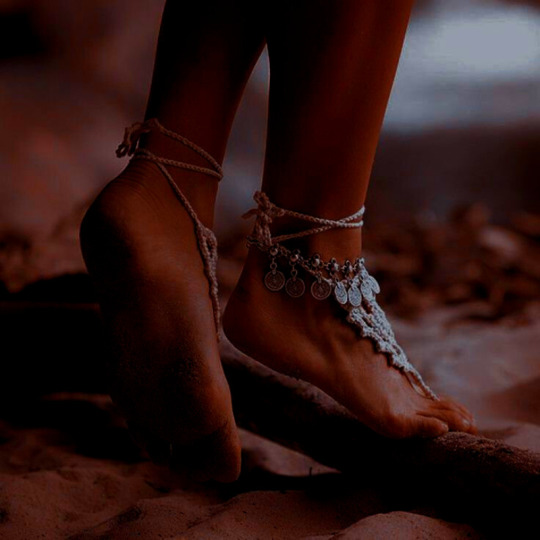
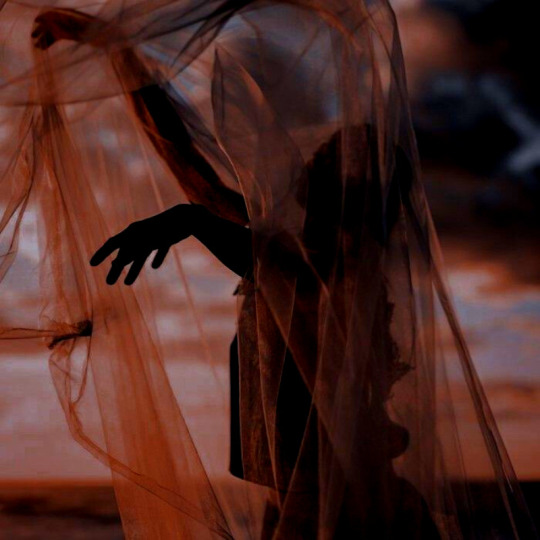
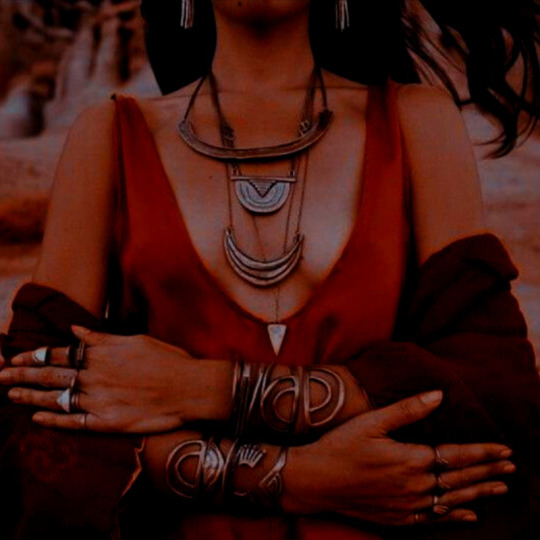




a-z myths: qadesh (syrian mythology)
qadesh is the goddess of nature, beauty and sexual pleasure.
198 notes
·
View notes
Text





"Make way! Pharaoh Ramses II approaches!!"
Pharaoh and his chariot are now complete. I just need to make a base for this whole piece.
The chariot set took about 2.5 weeks to complete and it was fun! This is one of the largest pieces I've ever done.
#customkits#hobby#fun#painting miniatures#table top games#toy photography#dnd#ancient history#new kingdom of egypt#ramses II#red copper miniatures#battle of kadesh#qadesh
8 notes
·
View notes
Text
New age
Hoy no amanecí con las mejores energías, me sentía muy mal y mi autoestima hoy estaba un poco baja y la verdad no tenía ganas de nada, pero siempre me recuerdo que está bien no estar bien, está bien estar mal, porque es importante para nuestra salud mental sentir todas las emociones que sentimos en ese preciso momento y, aunque suene muy meloso, me encanta sentir, incluso las emociones desagradables, esas emociones mal catalogadas cómo ''negativas'', aunque, seamos sinceres, de negativas tienen muy poco. Me hace sentir vive y que tengo una razón por la cual vivir, el sentir.
Se preguntaran el por qué del título de este post, bueno, en la espiritualidad new age siempre se nos ha dicho que esas emociones son negativas y te hacen vibrar bajo, pero ¿Qué mejor que sentir esas emociones que, si bien nos parecen desagradables, son muy buenas, pues nos permite desahogarnos?
#kemetism#pagan witch#paganism#witches of tumblr#pagans of tumblr#kemetic#kemetic witch#tamera#tameran wicca#witchcraft#goddess qadesh#qadesh#kitchen witch#deity work#my writing#witchy things#witches#espiritualidad#thoth#isis#goddess isis#osiris#god apedemak#apedemak#sacmis#sphinx#goddess sekhmet#spirituality#sekhmet#djehuty
2 notes
·
View notes
Text
Lorna lay in repose. Her belongings had been all but packed and her time in Arbor would find its zenith.
She was still weak, but her wounds had finally healed close, the poison of Sadira's blade all but siphoned from her body. She had taken full advantage of Dominic's strength, and he had packed both their things, while women ogled at the bare chested man, and she watched from the shadows.
She heard whispers, talk of a magical redhead here and felt the tiniest twinge of response. And lost herself to her past thoughts. Past memories of a time when life was quite different.
Pink Dust.

Pink Dust born to Sierra Blake, sister to Bianca, sister to Mavis, sister to Ayla, sister to Edith. The last born daughter to Sierra. Touched by fire, in more ways than one. Her destiny was said to be that of a life of both intrigue and turmoil.
Her childhood one of love and learning the healing arts with her sisters, and honored mother.
Her teen years proved different, something she always kept hidden now. For death would not be allowed to change her path. But it did.
Pink's life became one of collar and chains, stubbornly believing it was love.
The healer that was Pink Dust thought she was living happily, despite the maltreatment. Despite life amongst the black sands, of the Beachside Castle, where she learned not just to heal, but to cater to men and women of all kinds and trade.
Jormun was his name, The Scaly King.
And Pink thought it was love.
The harem of the Beachside Castle was renown. The secrets of Kings, Queens, princes, princesses, noblemen and women was their currency. The Castle thrived under the overbearing thumb of Jormun.


Until it did not, and unwarranted bruises were the norm for Pink.
Jormun had begun to thrive in hurting her. And when his malfience turned to the other in his harem, it was over.
And Pink Dust found herself the rightful owner of the Beachside Castle in Basildon.
The redhead could not forget that she was ruling with bloodstained hands, yet she would rule differently. All were given a choice. Some chose to follow the skin trade, some left with gold and wares to find their lives, and some even chose to learn the healing arts from Pink.
Her conscience plagued her, even as fewer visitors found their way to the weather beaten Beachside Castle.
It remained opulent, despite its outward appearance, none of it though could wash away the memory of what she had done. In the beginning she had convinced herself it was done for good reasons, that it was the only solution.
And only one solution came to mind.

Jormun had made many enemies amongst the trade, he stole, he killed for the best, and his harem had been amongst the elite. Pink traveled with him, as his personal medicine woman, and saw sands of many different colors, and remembered.
Steeling herself, she took the last of her harem with her across the sands and found her way amongst the sands of Sienna, to the Harem of Qadesh, and to Clara Rose.
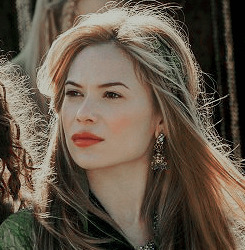
And her decision would be a gamble. Her small battered harem traveled, leaving the black sands behind. She found herself instead on the blue sands of The Badlands of Azure Bay, and with Clara Rose.
Pink shared her truth with her, told her what she knew she already knew, and a barter was made. The Beachside Castle and the black sands for a chance at a new life. Where Pink Dust would be no more.
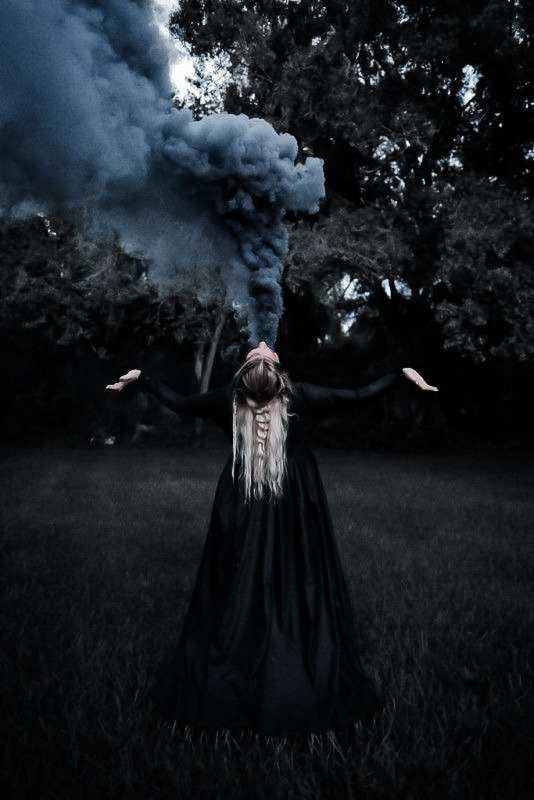
The Rings of Isis were those who were imbued with a magic like no other, an almost god-like power to create change, all for a sacrifice. The ritual was tedious, long, and as tears streamed down her eyes, Pink Dust began to fade away.


Features reformed, and kept hidden for a full moon, she would emerge. Still a firestarter, but a redhead no more.


"What shall be your new name?" She was asked.
She remembered her sisters, and her mother, lost to her. They were a lifetime ago she felt, but they were with her, "I have chosen to bear my family name. And my name shall be Lorna, Lorna Blake."

2 notes
·
View notes
Note
I dreamed that there was a new comic book adaptation of the life of Tutankhamen, and for some reason it depicted him cycling around Egypt on a wooden bike, so I went to your blog to ask what your opinion in bicycles in ancient Egypt was.
quite frankly obsessed with the idea of Ramses II power sliding in front of Muwatalli's forces at Qadesh on one of these bad boys:

68 notes
·
View notes
Text





Evict
/ə'vik(t)/
Verb | Past tense: Evicted
Expell (someone) from a property, especially with the support of the law

Did you ever wonder what happened to the gods and goddesses who were evicted from their thrown of ruling? What happened to them? Who were they? Where did they go?
Every new year, the main gods evict other gods and goddesses out to live amongst the mortals. They are almost completely stripped of their powers. Once the year is up, they report back to the council of gods and can decide if they want to stay or go back.

Welcome to the land of the evicts. Any gods or goddesses chosen to be sent to earth reside here. Some of them are not happy to be here, so they are more sassy compared to some others. As of right now, we have a mix of Norse, Celtic, and Egyptian gods and goddesses.
═════════════ஓ๑ Norse ๑ஓ═════════════
ஓ๑ Thor, god of thunder
ஓ๑ Loki, god of mischief
ஓ๑ Hœnir, god of silence
ஓ๑ Óðr, god of insanity
ஓ๑ Baldr, god of light
ஓ๑ Höðr, god of darkness
ஓ๑ Draugr, Norse spirit
═════════════ஓ๑ Celtic ๑ஓ═════════════
ஓ๑ Donn, god of the dead
ஓ๑ Morrigan, goddess of war
ஓ๑ Arawn, god of death
ஓ๑ Lugh, god of the sun
ஓ๑ Balor, leader of the Fomorians
ஓ๑ Cailleach, goddess of disease
ஓ๑ Corsair, god of pirates
ஓ๑ Abhartach, Celtic vampire
Fixing up profiles!
════════════ஓ๑ Egyptian ๑ஓ════════════
ஓ๑ Qadesh, god of sexual pleasure
ஓ๑ Ra, god of the sun
ஓ๑ Khonsu, god of the moon
ஓ๑ Bes, god of entertainment
ஓ๑ Osiris, god of death
ஓ๑ Serqet, god of scorpions
═════════════ஓ๑ Roman ๑ஓ═════════════
Soon

These higher beings have some basic introductions that should be read before interacting
rules | credits | writings | story behind the evicted | about admin

Evicted oc is a universe created by the admin of this bot. They own the rights to these characters. They are heavily inspired by Norse, Celtic, Egyptian, and Roman mythology. It will not follow those mythological stories. Please do not steal these ocs. Admin has been creating and developing them for years and will take matters seriously if they are copied again. Thank you.

133 notes
·
View notes
Text
Within descriptions of long-buried cities and temples, academic authors wrote of the sexually active Goddess as "improper," "unbearably aggressive" or "embarrassingly void of morals," while male deities who raped or seduced legendary women or nymphs were described as "playful," even admirably "virile." The overt sexual nature of the Goddess, juxtaposed to Her sacred divinity, so confused one scholar that he finally settled for the perplexing title, the Virgin-Harlot. The women who followed the ancient sexual customs of the Goddess faith, known in their own language as sacred or holy women, were repeatedly referred to as "ritual prostitutes." This choice of words once again reveals a rather ethnocentric ethic, probably based on biblical attitudes. Yet, using the term "prostitute" as a translation for the title of women who were actually known as qadesh, meaning holy, suggests a lack of comprehension of the very theological and social structure the writers were attempting to describe and explain.
Descriptions of the female deity as creator of the universe, inventor or provider of culture were often given only a line or two, if mentioned at all; scholars quickly disposed of these aspects of the female deity as hardly worth discussing. And despite the fact that the title of the Goddess in most historical documents of the Near East was the Queen of Heaven, some writers were willing to know Her only as the eternal "Earth Mother."
-Merlin Stone, When God Was a Woman
95 notes
·
View notes
Text
FRIENDS! spiritual, magical, divine, and devotee friends welcome!
Check list plsss🎆
Birds of a feather let’s flock together! Pretty Please!!
Like/interact w this post those lovers who love:
Aphrodite
Areia
Landback
Gaia / Ge / Terra / Tiamat / Cybele
Adi Parashakti
Astarte
Apollon
Lucifer
Lilith
Nike
Hekate
Ares
Epona
Ananke
Jezebel
Anat
Lamia
Medusa
Azrael
Pazuzu
Azazel
Hebe
Nyx
Selene
Helios
Thanatos
Zagreus
Cerberus
Qadesh
Samael
Amaterasu THEE RADIANT
Kali
Durga
Gratiae / Charites
Ama-no-Uzume
Antheia
Pomona
Great Satan
Echidna
Aku
Beelzebub
Inari
Iris
Hermes
Guanyin - Kannon
Bishamonten
Anadyomene
Benzaiten
Moon Princess
Mother Mountain
let’s have fun! i’m always happy to make new friends and revel in our shared interests!!! 💐💛
peace be upon us all💛🕊️
#helpol#hellenic pagan#looking for moots#eclectic pagan#neopaganism#earth based religions#shinto practitioners#panentheism#pantheism#pandeism#pantheonization#pantheon#tower of babel#luciferism#luciferianism#aphrodite worship#apollo worship#lucifer worship#lilith worship#ares worship#hekate worship#zagreus worship#lamia worship#echidna worship#cybele worship
107 notes
·
View notes
Text
Part 1
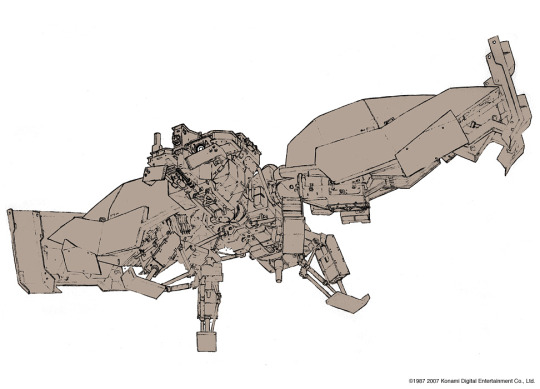









#i did not realize there were so many#mgs#metal gear#metal gear solid#mgs ghost babel#metal gear solid ghost babel#mgs acid#mgsv#mgsvtpp#the phantom pain#mgs 3#snake eater#mgs 4#i need to look into the other games#mgs portable ops
7 notes
·
View notes
Text
------------Pfizer---> Rezifp-----------

Reshef (a destra) raffigurato sulla stele di Qadesh.
Il termine è presente come etimo in lingua ebraica con il significato di "fiamma, fulmine" (Salmi 78:48), da cui derivano significati figurativi, come "freccia" (Libro di Giobbe 5:7) e "febbre che infiamma" (Deuteronomio 32:24)
Per la sua capacità di controllare e scatenare malattie e pestilenze, presso i greci venne accostato ad Apollo ed al vedico Rudra, mentre le caratteristiche marziali e belligeranti di Reshef ne hanno spesso favorito l'occasionale paragone con le figure di Marte e del dio babilonese della morte Nergal. I fenici si riferirono a lui come Resheph Gen (‘Reshep del Giardino’) e Baal Chtz (‘Signore delle frecce’), mentre gli ittiti lo hanno descritto come il dio cervo o il dio gazzella. A Larnaca, Cipro, Reshef aveva l'epitteto di ḥṣ, inteso come "arco" da Javier Teixidor, che, di conseguenza, interpretava Resheph come dio delle malattie, comparabile ad Apollo, le cui frecce portarono la peste contro gli Achei (Iliade I.42-55). Reshef compare anche in testi mitologici ugaritici come il poema epico di Kirta.
il testo di un'antica formula apotropaica invoca il nome di Reshef, insieme a quello di Astarte, come rimedio all'azione del demone cui si attribuiva la causa dei dolori addominali. Nel suo duplice aspetto di divinità guerriera e guaritrice, capace di coniugare in sé le opposte polarità di vita e morte, Reshef era conosciuto in Egitto e nel vicino Oriente.
-----
scateniamo l'immaginazione...;-)
3 notes
·
View notes
Photo

Qadech
Qadech (alias Qadesh ou Kedech) était une ville de la région de Syrie et un important centre de commerce dans le monde antique. Elle est probablement mieux connue comme le site de la célèbre bataille entre le pharaon Ramsès II (Le Grand, 1279-1213 av. J.-C.) d'Égypte et le roi Muwatalli II (1295-1272 av. J.-C.) de l'Empire hittite en 1274 avant notre ère.
Lire la suite...
5 notes
·
View notes
Text


WIP of another historic minis. This Assyrian archer is part of the Hittite forces. I recently moved my painting station to our basement because it is so hot, so I'm getting used to it still!
Not too bad of progress!
#customkits#hobby#painting miniatures#toy photography#table top games#dnd#qadesh#hittite#ancient assyria
8 notes
·
View notes
Text
Rueda tamerana
Antes de empezar este post, decirles que yo vivo en el hemisferio Sur, por lo que si ustedes son de España, México, Francia, Inglaterra u otras partes del hemisferio Norte, les recomiendo ver las fechas exactas de su hemisferio, para que así puedan crear su propio calendario o rueda tamerana.
Otra cosa que también es importante recordarles, es que yo soy Kemetismo-Tamerane, es decir, no soy 100% reconstruccionista, por lo que estas festividades a más de une le hará volar la cabeza.
Ahora sí, comencemos con este post.
En esta publicación podrán encontrar las festividades de la Tamera y costumbres que yo suelo practicar. Estas costumbres las creé según lo que me resonaba.
El orden en el que les daré las festividades serán desde Verano hasta primavera, debido a que aquí el verano comienza a notarse desde Diciembre y comienza, definitivamente, en Enero y termina en Marzo.
Zet-Tepi, el solsticio de Verano (22 - 23 de diciembre)
El sol retoma sus fuerzas para volver a nacer y su brillo aumenta, calentando, y, lamentablemente, quemando, todo a su paso.Esta celebración va dirigida a Ra, aunque se le puede rendir culto a Khepri o Iemu.En mi caso, yo suelo poner tres altares, uno para el netkher solar a elección, otro para Tutu y otro para una netkherut Khiret, que también es a elección.Vayamos ahora con la explicación de cada punto de esta festividad.Itemu, Ra y Khepri, los dioses a elección para la resurrección del SolComo les dije anteriormente, esta festividad puede ir para cualquiera de estos tres netkheru o, si desean, para los tres, pues recordemos que ellos tres están relacionados con el mito de la creación y con el Sol como una divinidad.DecoraciónUn mantel rojo, amarillo, naranja o blanco serían los colores a escoger para sus altares, debido a que estos son los colores del sol.Velas rojas, amarillas, naranjas o doradas son una muy buena opción también.OfrendasLas ofrendas van a variar según el netkher, pero siempre escojan frutas tropicales, hierbas de verano y cosas refrescantes, aunque a Ra le encanta el vino, así que ya saben, si pueden y desean beber alcohol, una copa de vino en el altar de Ra no está demás.Incienso de rosas, mirra, khipy o canela son los aromas perfectos para esta ocasión y más si son varias divinidades.Tutu, el dios de la protección contra las enfermedades, demonios y pestesPero ¿Por qué un altar a Tutu?Esto lo hago según mi práctica, y es que una protección en verano de Tutu nunca viene mal, especialmente porque es una de las épocas del año en el que las personas suelen enfermarse más seguido, pues el aire húmedo, y la humedad en general, suele traer muchas enfermedades, desde catarros comunes hasta amigdalitis y algunas enfermedades respiratorias leves.DecoracionesUn mantel rojo, dorado o verde en esta ocasión es la mejor opción, pues también son los colores de Tutu, velas verdes, doradas, amarillas o café.OfrendasA Tutu le gusta el pan, mejor si es casero, el vino tinto, los cereales, y con cereales me refiero a quinoa, avena, etc., no a los Choco krispis, leche, vino blanco, frutas tropicales, especialmente la piña y el mango, fresas y mermelada de frutas.En cuanto a los aromas, pues el incienso de mirra, canela, clavo de olor, khipy y de coco son los mejores.Las netkherut Khiret, las diosas sanguinarias y guerrerasOtro altar importante, bajo mi práctica, es el de las netkherut Khiret, los ojos de Ra.Recordemos que en esta época son ellas quienes representan el sol abrazador, además de ser las responsables de las pestes, enfermedades y plagas del verano, así que también es importante montarles un altar a ellas, no tan solo para pedir su bendición, que nunca viene mal, sino también para rendirles culto y mostrar respeto ante ellas.DecoraciónUn mantel rojo o amarillo, debido a que el rojo es el color del caos, la destrucción y el sufrimiento, y el amarillo es el color de la enfermedad, las pestes y las plagas, en este contexto, claro está.OfrendasIncienso de mirra, canela, khipy, clavo de olor y rosas son las mejores opciones, mientras que las ofrendas comestibles/bebestibles van a depender según la netkher con la que trabajen.Netkherut Khiret- Sekhmet- Hut-Hor- Satet- Wadjet- Nekhbet- Tefnut- Bastet- Beset- Ked-Her- Shesmetet- Wenut- Weret-Heau- Mafdet- Menhit- Atartet
Lychnokaia (24 - 26 de diciembre)
Esta festividad está dedicada a Net, la madre y padre de los netkheru, aquí se le arma un altar para así rendirle culto.DecoraciónMantel rosado, verde o rojo, colores relacionados a la maternidad, el amor y la vida, velas rojas, amarillas y naranjas, en representación del sol, y girasoles.OfrendasInciensos de mirra, khypi, canela, clavo de olor y lavanda, en cuanto a las ofrendas comestibles, podemos ofrendar chocolate, arándanos, uvas, vino tinto y vino blanco.
Wep-Renpet, el nacimiento de Iten (19 de enero)
Aquí nos encontramos con una nueva celebración de nacimiento, es decir, un cumpleaños, en este caso, esta festividad se centra en Iten, el dios del disco solar.DecoraciónMantel verde, rojo, amarillo o dorado, velas doradas y el disco solar, esto para poder representar a Iten y darle la bienvenida a un día más de vida.OfrendasIncienso de mirra, canela y khipy, vino tinto, frutas tropicales, leches vegetales, ensaladas, con una variedad de verduras, no me vayan a poner solo lechuga o tomate.
La siembra (26 - 27 de enero)
Aquí podremos llevar a cabo un ritual, el que más nos resuene, yo, en lo personal, siempre quemo cosas que ya no me sirvan y renuevo mi altar con cosas nuevas y las que ya no me resuenan las guardo o las doy de ofrenda a La Madre.Por favor, tengan cuidado con el fuego, tengan a mano siempre algo con que controlarlo.AltaresKebBesBesetSatetSopdetBarAnentitUnutDecoraciónPlantas vivas o flores, semillas, hongos, manteles verdes o negros, velas negras.OfendasVa a depender de la divinidad con la que trabajen
Equinoccio de Otoño (20 - 21 de marzo)
Aquí conmemoraremos un acontecimiento doloroso, la razón por la cual el Sol pierde fuerzas en otoño, estoy hablando del envenenamiento a Ra a causa de Aset.Aquí podremos meditar y percatarnos de si lo que estamos haciendo con nuestras vidas nos mantiene satisfeches o no, si deseamos cambiar algo o no, pues recordemos que esto lo hizo Aset para poder encontrar a su esposo, Usir.DecoraciónMantel café, naranja o amarillo, velas amarillas y rosadas.OfendasRa: Incienso de Mirra, khipy y coco, vino tinto, dátiles, fresas, chocolate, manzanas rojas y uvasAset: Incienso de mirra, khipy y canela, vino blanco, fresas, chocolate, dátiles y mangos
El transito (12 de mayo)
Aquí conmemoraremos la muerte de Usir, pero también celebraremos la coronación de Suty, pues es en este momento en el que Sutekh asciende al trono, recordemos que, aunque Suty sea el netkher del caos y la discordia, esto no quiere decir que sea un dios malo, más bien, sería malévolo, pero esto no es sinónimo de ser un dios malo, es importante recalcar esto, pues también es el guía de los comerciantes y de las personas que se pierden en el desierto.DecoraciónMantel verde o rojo, velas rojas y doradas.OfrendasIncienso de mirra, canela y khipy, vino blanco, lechugas, ojalá sin salsa blanca, fresas y chocolate, dulce y amargo.
Solsticio de invierno (21 - 22 de junio)
El nacimiento de Heru, sa Aset, aquí comienza una nueva era, donde la oscuridad ganó, sin embargo, aquí también Heru es protegido por Hut-Hor y amamantado por Uadjet, así que aquí tendríamos a cuatro netkheru presentes:AsetHeruHut-HorUadjetDecoraciónMantel rosa, verde o negro, velas negras o rosadas y el disco solar.OfendasPastel de calabazas, pie de limón, vino tinto, leche vegetal, acelgas, pan de miel vegetal, incienso de rosas, khipy, mirra y canela.
Heru-Renpet (1 - 5 de julio)
Cinco días fuera del año, siete netkherut, cabe destacar que para una de estas divinidades haremos un altar a parte, los netkheru son:NutUsirHaruis/Heru-WerSutyAsetNebt-HetDjehutyA cada uno de los hijos de Nut les daremos un día de celebración de su nacimiento, siguiendo el orden en el que nacieron:1° Usir2° Hauris3° Suty4° Aset5° Nebt-HetAquí es importante que entendamos que estos días están fuera del año, así que, por lo menos para mí, Julio comienza recién el 6, es un poco enredoso, pero luego se los explicaré mucho mejor.DecoraciónMantel blanco, velas verdes y azules.OfrendasIncienso de mirra, rosas y khypi, vino tinto, leche vegetal, mango, fresas, lechugas, dátiles.
Festival de las luces (12 - 15 de julio)
Sí, hay otra Lychnokaia, pero le quise poner este nombre para diferenciarlas, pues esta festividad es más pequeña y se llevaba a cabo solo en el culto doméstico, la Lychnokaia como tal se celebraba en toda Kemet por todo el pueblo.Aquí le daremos prioridad a las diosas nutricias a elección o las podemos ir rotando, pues esta festividad es solo un día, sin embargo, se encuentra entre el 12 y 15 de Julio, así que, por mi parte, lo celebro desde el 12 hasta el 15.DecoraciónVelas doradas y rosas, mantel rosadoOfrendasIncienso de mirra, khypi, rosas y canela, en cuanto a las ofrendas comestibles/bebestibles, estas hay que elegirlas según la netkher a la que vayamos a rendir culto.Netkherut mutMutNutRenenutetSerketSekhmetTefnutNetSatetAsetNebt-HetHut-HorBeset (según la creencia, pues recordemos que en algunos papiros Beset es la contraparte o consorte de Bes)UadjetNekhbetKadesh
Resurrección de Usir (23 - 24 de septiembre)
Aquí celebraremos la resurrección del netkher de la naturaleza, la fertilidad y el faraón de los muertos, Usir. En esta festividad participan varias divinidades, las cuales son:NutKebInpuDjehutyAsetNebt-HetUsirTodos forman un papel importante, sin embargo, yo les recomendaría tener un altar para Aset y Usir separado porque, pues, digamos que estas fechas la celebran de una manera no tan grata de ver si estás fuera.DecoraciónManteles verdes, negros o azules, velas verdes, azules o negras, disco solar, sarcófagos, no creo que sea necesario afirmar que debe de ser uno pequeño para que quepa en el altar, ¿Cierto?OfrendasVino tinto, pasteles, chocolate, jugo de uvas, mangos, manzanas rojas, dátiles, fresas, cerezas, ciruelas, leches vegetales, frutos secos, inciensos de mirra, rosas, khipy, canela o coco.
La gran unión (12 de noviembre)
En lo personal, no me gustan las bodas, pero cuando se trata de las bodas de los dioses, feliz de estar ahí, en estas fechas se les suele rendir culto a Hut-Hor y a Heru, sin embargo, no es obligación que sean esas divinidades a fuerza, así que aquí les dejo la lista de las parejas deivinas.Bes, Beset (según la creencia) y/o TaweretSuty, Nebt-Het, Astartet y AnentitBar y AnentitKuk y KauketHeh y HehetNun y NaunetTenemy y TenemetAmen y MutAmen y AmonetAset y UsirKhnum y SatetKhnum y NetNet y SutyNet y SobekHeru y Hut-HorDjehuty y SeshatShu y TefnutKeb y NutAn-Her y MenhitPtah y SekhmetPath y KadeshKadesh y Reshpu/Menu (es mejor poner a los tres, ya que no se sabe con certeza quién es el consorte de Kadesh)Inpu e InputSopdet y SahSokar y SokaretSopdet y HapSerket y HeruMontu, Raet-Taui, Iunyt y TayenenetSokar y Hut-HorSobek y HeketSobek y Hut-HorEsas son solo algunas parejas Reales, en algún otro post hablaré más profundamente de todas o de las que pueda.DecoraciónMantel rojo o rosa, velas rojas y rosasOfrendasIncienso de khipy, mirra, canela y manzana, vino tinto, postres dulces, ojalá sean caseros, banquetes, pequeños, que sea para ustedes y las parejas.En lo personal yo no formo las triadas, aunque si ustedes desean pueden complementar las parejas con sus hijos.
Estas han sido todas las festividades tameranas, espero que les haya gustado y servido, les dejo aquí mi Beacons para que puedan encontrar mis otras redes sociales y la biblioteca virtual, nos vemos en algún próximo blog, se les quiere, adiós.
#kemetism#pagan witch#paganism#witches of tumblr#pagans of tumblr#kemetic#kemetic witch#tamera#tameran wicca#witchcraft#netkherut#netkheru#goddess qadesh#qadesh#wadjet#witches#espiritualidad#tutu#witchy things#spirituality#deity work#vegan witch
0 notes
Text
Qadesh of Nez
Qadesh of Nez is the sole custodian of the black throne, the seat of power and terror of the Urakkad Empire. He alone has the privilege and the burden of tending to the ancient relic, a throne carved from a dark amber that seems to hold the souls of the tormented within. He cleans and polishes the throne, making sure it retains its ominous beauty and reflects the dark will of its owner, the Black King.
Qadesh of Nez is a pitiful and repulsive being, a victim of a cruel fate that twisted his body and mind. He was born with horrific deformities that made him an outcast and a pariah among his own people. His parents, unable to bear the shame and the fear of their son, offered him as a sacrifice to the Black King, hoping he would be killed or discarded. But the Black King, who had a taste for the bizarre and the macabre, spared the child and took him to his court, where he raised him as his own.
Qadesh of Nez grew up in a world of wickedness and decadence, surrounded by the enemies and sycophants of the Black King. He was constantly ridiculed and abused by the courtiers, who saw him as a freak and a monster. He learned to endure the pain and the humiliation, finding solace only in his fascination with the strange and the twisted. He developed a bond with the Black King, who was the only one who could understand his plight and appreciate his peculiarities. The Black King often conversed with Qadesh of Nez, confiding in him his secrets and his plans, and sometimes indulging in his whims and requests.
Qadesh of Nez is a wretched and loathsome creature, sustained by the dark magic of the Black King to serve his wicked empire. His only duty is to care for the black throne, a task he performs with devotion and reverence. He hopes for nothing more than to please his master and to escape the misery of his existence. He knows many secrets and has witnessed many horrors, but he keeps them to himself, loyal to the Black King until the end. He is a tragic figure, a reminder of the cruelty and the corruption of the Urakkad Empire, and a symbol of the Black King's power and terror.
#conworld#worldbuilding#low fantasy#world building#arkera#creative writing#dark fantasy#fantasy world
3 notes
·
View notes
Note
Qadesh: *offers some wine* I can smell you from miles away
@evicted-oc
🍷: Smell me? *sniffs his pits* do I stink? I know I went to the gym but I showered-
11 notes
·
View notes
Text




Qadesh: I'm here and my ass is ready~
@florintradat @livealittleoc-cb
75 notes
·
View notes